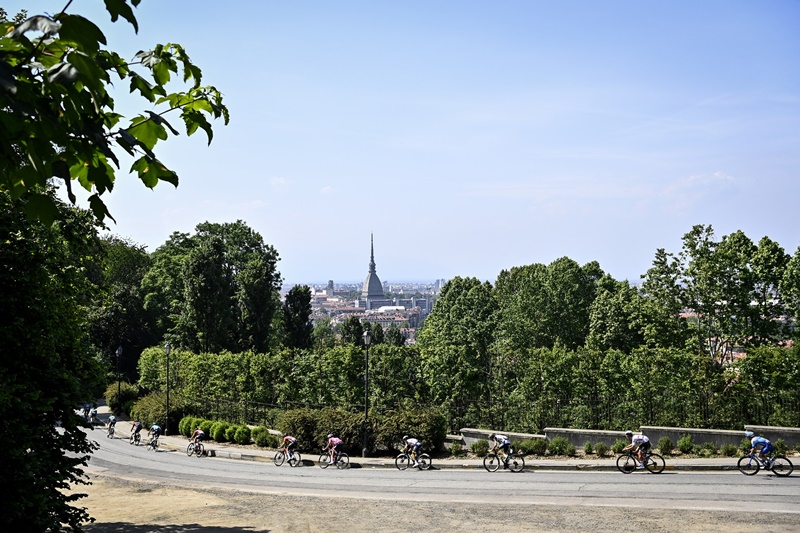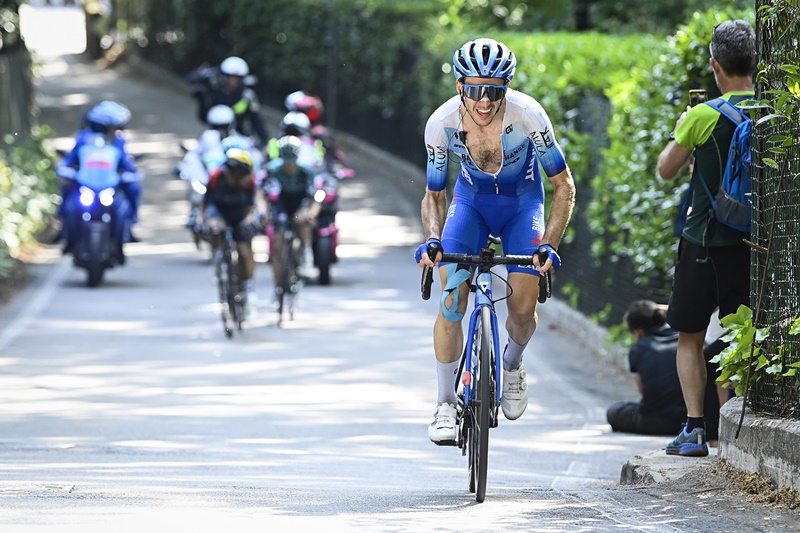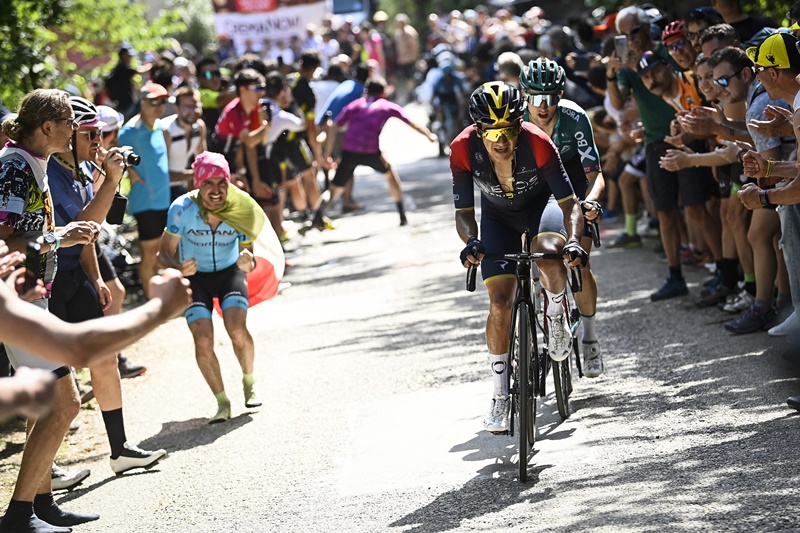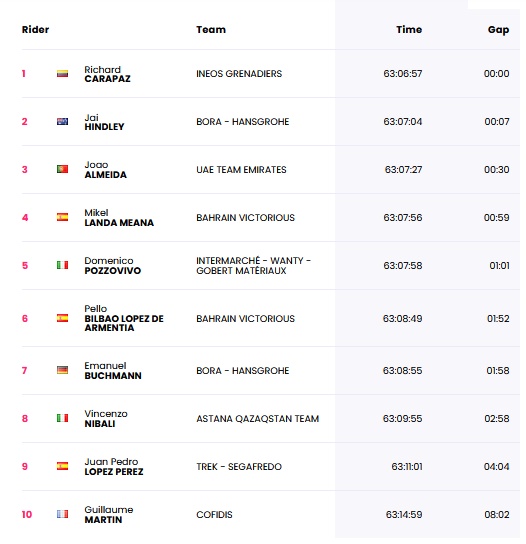
To quickly take stock of where we were at the start of the week, Juan Pedro Lopez was very obviously temporarily in the pink jersey.
Based on how things had gone on the Blockhaus climb, five of the six riders stacked up immediately behind him in the overall standings were looking like our genuine contenders.
Against the odds, these five had managed to order themselves alphabetically. They were Joao Almeida, Romain Bardet, Richard Carapaz, Jai Hindley and Mikel Landa.
And then there were four. At most.
As weekly recaps go, this one should be pretty quick, because barely anything of import happened. The most significant development was probably Romain Bardet spending 24 hours vomiting.
The Frenchman passed several of those hours on the bike. “He slept the whole way back in the bus after the race,” said coach Matt Winston. “He didn’t eat last night, he couldn’t eat anything. He was awake all night being sick.”
At that point it was pretty clear that Bardet wasn’t going to win the 2022 Giro d’Italia. Nevertheless, he got on his bike to start the next day, but after continuing to throw up in the neutral zone decided to call it a day.
Bardet’s abandonment was a little more conventional than Stage 10 winner, Biniam Girmay – who you may remember also won Gent-Wevelgem earlier in the year. The Eritrean had a prosecco cork mishap during the podium ceremony and couldn’t start the next day “because my eye still needs a rest.”
So what DID happen during the race?

The fiendishly up-and-down Stage 14 was won by Simon Yates, who somehow appears to have totally overcome the knee injury that derailed his overall bid. I don’t exactly know how a knee can heal in a few days while you’re competing as a professional endurance cyclist, but there you go. The stage was more notable for the fact that Juan Pedro Lopez ceded the overall lead to Richard Carapaz.

The Ecuadorian was in the first group that finished behind Yates, along with Vincenzo Nibali and Jai Hindley. Nibali’s poor start to the race means he’s three minutes off the pace, which you’d think would be too much to make up, even if he does seem to be finding good form. Hindley is looking like Carapaz’s most likely challenger.
Joao Almeida finished 19 seconds behind them and Mikel Landa was 12 seconds behind him.
And that was pretty much it. Sunday’s mountain stage didn’t really bring any significant racing.

Is Mark Cavendish still in the race?
Yes, he is, but the Manxman’s fortunes appeared to sink sharply when his lead out man Michael Morkov abandoned with illness after Stage 6.
Cavendish has historically had the ability to find wins in all sorts of different ways, but the conventional bread and butter way is to have a good “pilot fish” who can thread you through the melee of a sprint finish and also launch your sprint.
“It’s a known fact Michael is the best leadout man in the world,” said Cavendish last year when Morkov helped him to four unexpected stages and the green jersey at the Tour de France. This was a year after the Dane had helped Sam Bennett win the same competition. He’s handy to have around.
Cavendish is a distant second in the points competition at this year’s Giro behind Arnaud Demare, who won his third stage of the race this week. The two of them have one more sprint stage to aim for.
What’s next?
The short preview of Stages 16-21 goes: mountain, mountain, flat, mountain, mountain, time trial.
Stage 16 is a beast: four climbs and 202km. That’s enough that the racing might be blunted by the finish, but it’s also fatigue in the legs that might separate the riders more easily in the days to come.
Stage 19 stands out too, if only because the organisers are trying to pass it off as ‘hilly’ rather than mountainous. Quite how the mid-stage Slovenian climb of Kolovrat counts as a hill when it’s 10.3km at 9.2% is anyone’s guess.
Stage 20 is another big day: two big climbs before a summit finish on Passo Fedaia (14km at 7.6% but double-digit gradients for pretty much the whole of the last 5km).
The final time trial is 17.4km and is in fact the same course where Mikel Landa fell off the podium in 2019.
I’ll recap all of this next week. Sign up for the email here.

Leave a Reply